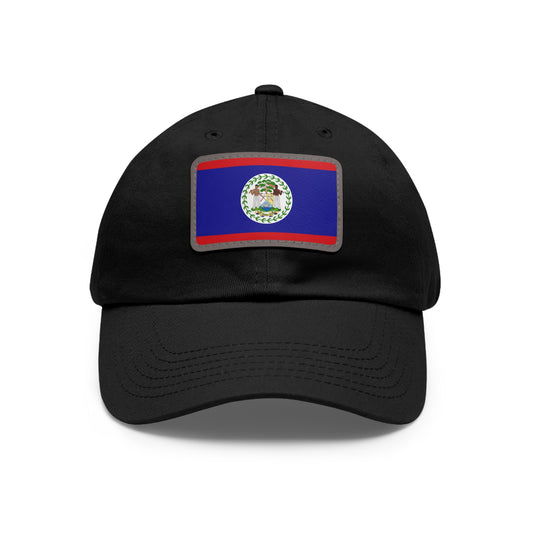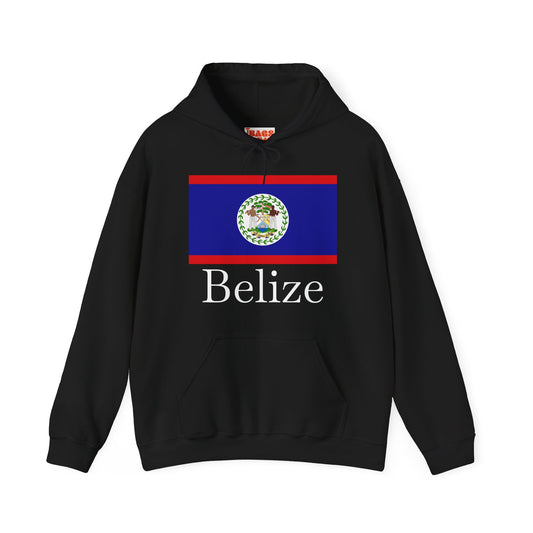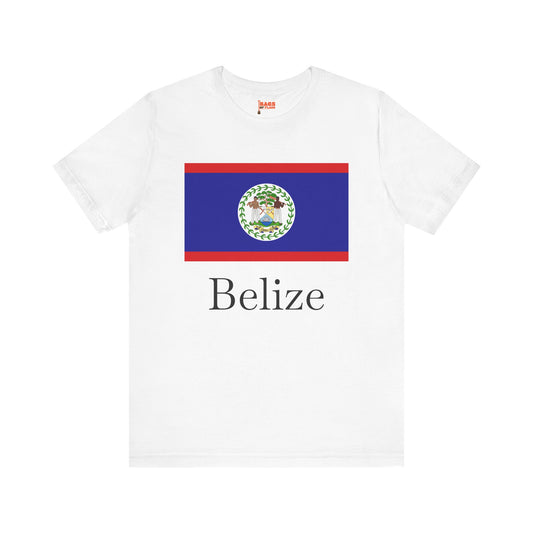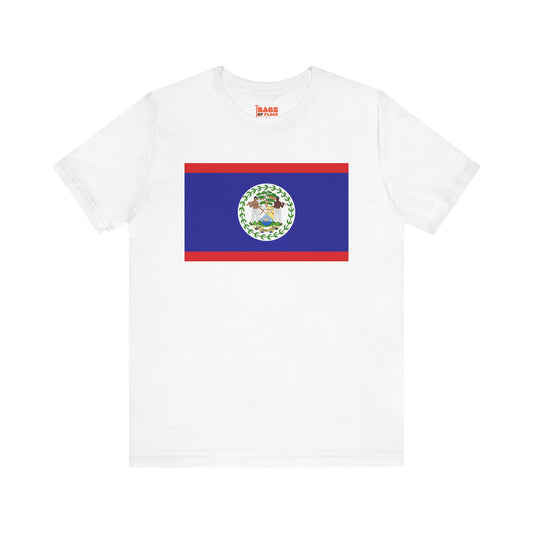-
Belize Pillow
Regular price $22.65 USDRegular priceUnit price / per -
Belize Backpack
Regular price $59.79 USDRegular priceUnit price / per -
Belize Leather Patch Hat
Regular price $18.85 USDRegular priceUnit price / per -
Belize Sweatshirt
Regular price $34.15 USDRegular priceUnit price / per -
Belize Flag Sweatshirt
Regular price $34.15 USDRegular priceUnit price / per -
Belize Mug
Regular price $11.65 USDRegular priceUnit price / per -
Belize Trucker Cap
Regular price $14.90 USDRegular priceUnit price / per -
Belize Hoodies
Regular price $34.40 USDRegular priceUnit price / per -
Belize T-shirts
Regular price $22.79 USDRegular priceUnit price / per -
Belize Flag on Hoodie
Regular price $34.40 USDRegular priceUnit price / per -
Belize Flag on T-shirt
Regular price $22.79 USDRegular priceUnit price / per
Collection: Belize
The Belize flag symbolizes national pride and identity for the Central American country. With its vibrant colors and unique design, the flag represents Belize's history and culture. We will explore the overview, historical context, symbolism, current relevance, and additional facts of the Belize flag.
Overview of the Belize Flag

At the heart of Belize's national identity lies its flag, a vibrant canvas of royal blue ensconced by two thin red stripes, representing the unity and strength of the nation. Dominating the center is the national coat of arms, encircled by a green wreath and guarded by two industrious woodcutters, signifying the labor and perseverance of the Belizean people. The coat of arms itself is a rich tapestry of Belize's diverse history and natural wealth, featuring tools of the woodcutting trade that hark back to the country’s early economic activities, a mahogany tree symbolic of the nation's enduring connection to its natural resources, and a shield that underscores the commitment to protect its sovereignty and democratic values.
Below this emblem, the national motto "Sub umbra floreo" poignantly reminds the nation of its resilience and growth under protection. This intricate design is more than just an emblem; it's a narrative woven from the threads of Belize’s past, present, and future, inviting all who behold it to reflect on the country’s rich heritage and the collective aspirations of its people.
Historical Context of the Belize Flag

Adopted on September 21, 1981, amidst the fervor of independence, the Belize flag is a testament to the nation's break from British colonial rule and its stride towards sovereignty. The original design was carefully selected to embody the unity and diversity of Belize’s people, its rich natural resources, and the determination to foster a cohesive national identity. Over the years, this emblem has undergone slight modifications, but its core symbols have remained steadfast, a beacon of the country’s resilience and commitment to harmony and democracy.
Notably, adding the red stripes was a later inclusion aimed at representing the political solidarity across Belize, transcending the bounds of party affiliations to embrace a unified national front. This flag, woven from the threads of liberation, reflects not only the country's journey to independence but also the collective aspirations of its people for a prosperous future underpinned by peace and democratic governance.
Symbolism Embedded in the Belize Flag
The symbolism embedded in the Belize flag profoundly reflects the nation's identity, culture, and aspirations. The national coat of arms is central to its design, which holds significant meaning. The shield at the center symbolizes protection, representing Belize’s commitment to safeguarding its sovereignty, freedom, and democratic principles. Surrounding the shield, the two woodcutters are symbolic of the country's roots in the logging industry, a nod to the laborious beginnings and the perseverance of its people. The mahogany tree depicted is significant, standing as a testament to the nation's rich natural heritage and the value placed on its conservation and sustainable use.
The tools of the woodcutting trade – axes and paddles – further underline the importance of labor and industry in shaping the country's past and future. Additionally, the green wreath encircling the coat of arms symbolizes Belize's unity and the lush landscapes. At the base of the coat of arms, the national motto “Sub umbra floret” translates to “Under the shade, I flourish,” encapsulating the spirit of resilience, growth, and prosperity of the Belizean people under the protective canopy of their land's abundant resources and divine providence. This intricate confluence of symbols on the flag serves as a daily reminder of the country’s enduring principles and the collective journey of its people toward a thriving, inclusive future.
Current Relevance of the Belize Flag
Today, the Belize flag remains a vibrant symbol of unity, pride, and patriotism, deeply ingrained in the fabric of the nation’s identity. It is prominently featured in many public arenas, from government buildings to schools. It plays a central role during national holidays and celebrations such as Independence Day and Baron Bliss Day. Its presence at military ceremonies underscores its significance as a symbol of the nation's sovereignty and the sacrifices made for its freedom.
It serves as a beacon of cultural identity for Belizeans living abroad, connecting them to their homeland's rich heritage and diverse culture. While discussions about its representation and the inclusivity of its symbols occasionally surface, these debates underscore the flag's ongoing importance in Belizean society. It represents the country's past, current aspirations, and shared values that unite its people. In this way, the Belize flag continues to be a powerful emblem of national cohesion, reflecting the dynamic and evolving narrative of Belize and its citizens.
Additional Facts and Protocols for the Belize Flag
The protocols for displaying the Belize flag are rooted in a deep respect for the nation’s symbol of sovereignty. When flown, the flag must never contact the ground, symbolizing the nation's resilience and enduring spirit. It is raised promptly at the first light of dawn and will be lowered with dignity as the sun sets, unless illuminated during the night, signifying the country's perpetual pride and vigilance.
While the flag embodies the heart of Belizean identity, it is not to be utilized for purposes that could be deemed disrespectful or commercial, ensuring its sanctity is preserved across all contexts. A fascinating aspect of the flag's color scheme—the integration of red and blue—serves as a testament to the nation’s quest for unity, mirroring the hues of the primary political parties at the time of Belize gaining independence, thus symbolizing a unified national identity beyond political divides. These protocols and the thoughtful selection of colors underscore the flag's role as a beacon of unity, heritage, and national pride.






















